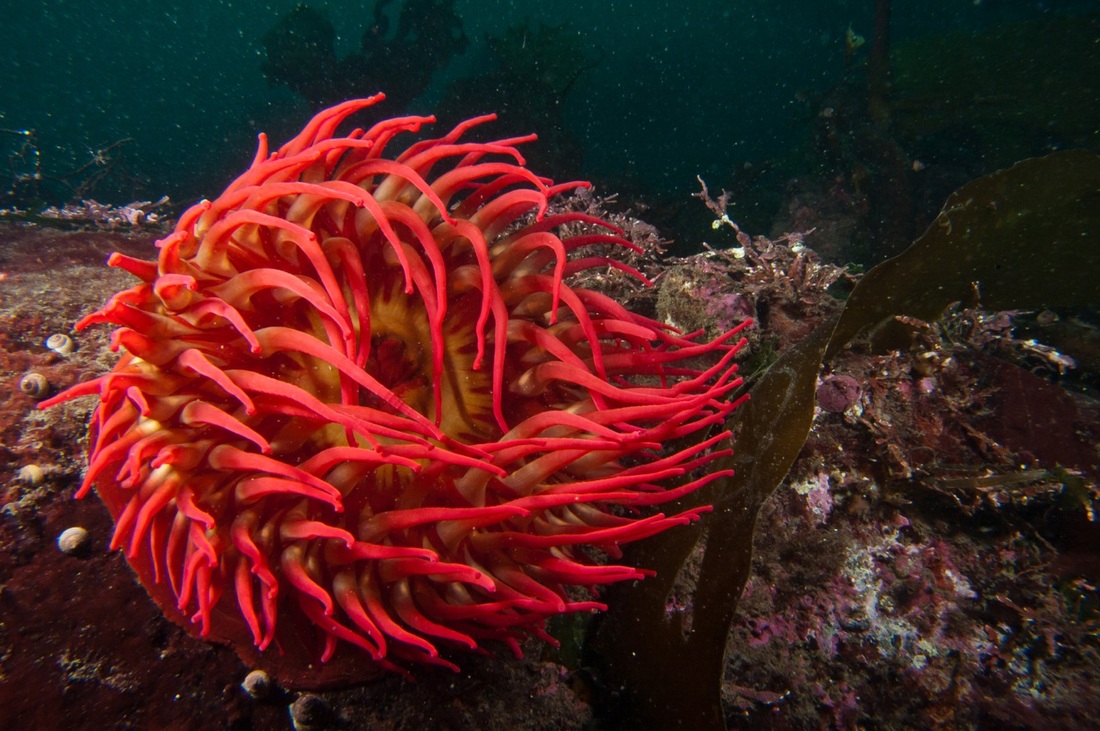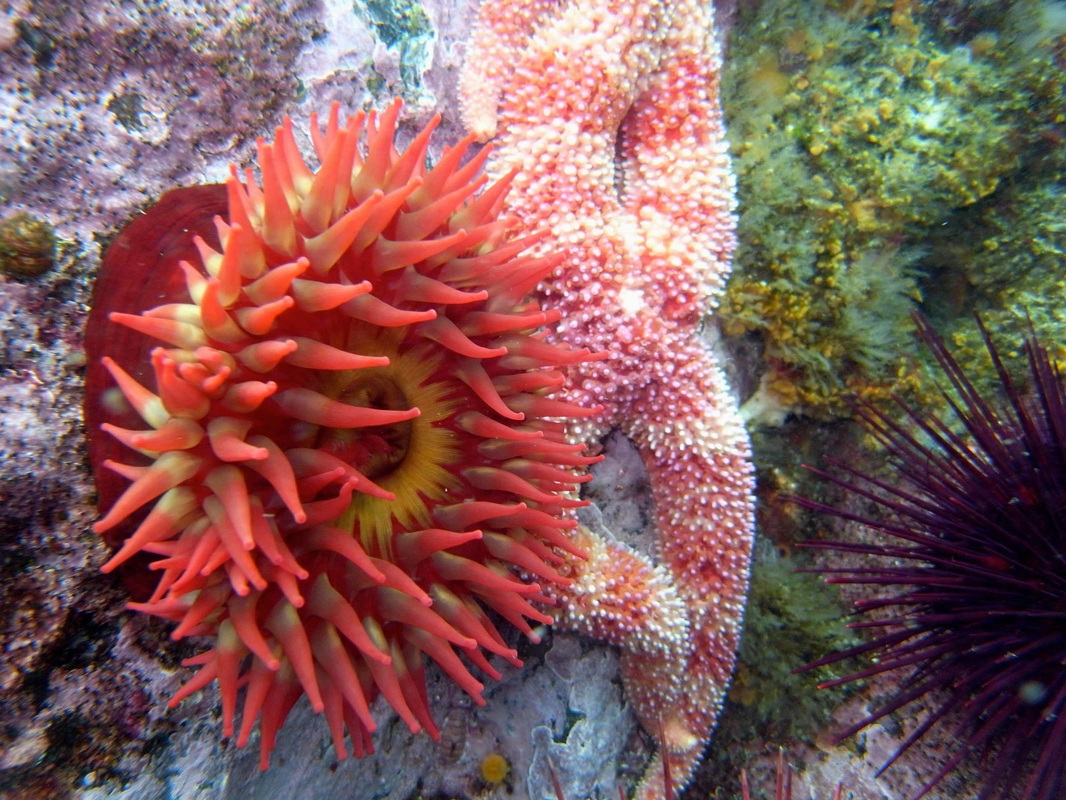Fish-eating anemone • Urticina piscivora
Photos by Mike Munroe (left) and Jenn Burt (right, beside a painted star).
Identification
The fish-eating anemone has a tall maroon column with no markings. The oral disc is red or white with red lines. The short but slender tentacles are all white or white at the base with pink or red tips, as in the above photo. It reaches 30 cm tall and 30 cm in diameter. Juveniles are much brighter in colour.
Habitat & Range
While it may be found in the intertidal, this anemone commonly inhabits subtidal areas of outer coastlines. It may be found on pilings. Its range extends from Polar waters and northern Alaska to southern California.
Similar Species
The painted anemone (Urticina crassicornis) usually has banded tentacles and a column blotched with red, green, and yellow.
Intriguing Info
True to its name, the fish-eating anemone preys on small fish, capturing them with its tentacles. Interestingly, however, the painted greenling (Oxylebius pictus) has been observed lying in this species for protection and remains unharmed.
This anemone also eats shrimp and other invertebrates. Its tentacles can severely sting human skin.
iNaturalist
https://www.inaturalist.org/taxa/51711-Urticina-piscivora
The fish-eating anemone has a tall maroon column with no markings. The oral disc is red or white with red lines. The short but slender tentacles are all white or white at the base with pink or red tips, as in the above photo. It reaches 30 cm tall and 30 cm in diameter. Juveniles are much brighter in colour.
Habitat & Range
While it may be found in the intertidal, this anemone commonly inhabits subtidal areas of outer coastlines. It may be found on pilings. Its range extends from Polar waters and northern Alaska to southern California.
Similar Species
The painted anemone (Urticina crassicornis) usually has banded tentacles and a column blotched with red, green, and yellow.
Intriguing Info
True to its name, the fish-eating anemone preys on small fish, capturing them with its tentacles. Interestingly, however, the painted greenling (Oxylebius pictus) has been observed lying in this species for protection and remains unharmed.
This anemone also eats shrimp and other invertebrates. Its tentacles can severely sting human skin.
iNaturalist
https://www.inaturalist.org/taxa/51711-Urticina-piscivora
References
Cowles, D. (2005). Urticina piscivora (Sebens and Laakso, 1977). Invertebrates of the Salish Sea. Rosario Beach Marine Laboratory. Accessed 09/12/2014,
Fish-eating anemone. Monterey Bay Aquarium. Monterey Bay Aquarium Foundation. Accessed 09/120/2014.
Harbo, R. M. (1999). Whelks to whales: Coastal marine life of the Pacific Northwest [revised edition]. Madeira Park, BC: Harbour Publishing. P. 62.
Lamb, A., and Hanby, B. (2005). Marine Life of the Pacific Northwest [electronic version]. Madeira Park, BC: Harbour Publishing.
Authors and editors of page
Kelly Fretwell and Brian Starzomski (2014).
Cowles, D. (2005). Urticina piscivora (Sebens and Laakso, 1977). Invertebrates of the Salish Sea. Rosario Beach Marine Laboratory. Accessed 09/12/2014,
Fish-eating anemone. Monterey Bay Aquarium. Monterey Bay Aquarium Foundation. Accessed 09/120/2014.
Harbo, R. M. (1999). Whelks to whales: Coastal marine life of the Pacific Northwest [revised edition]. Madeira Park, BC: Harbour Publishing. P. 62.
Lamb, A., and Hanby, B. (2005). Marine Life of the Pacific Northwest [electronic version]. Madeira Park, BC: Harbour Publishing.
Authors and editors of page
Kelly Fretwell and Brian Starzomski (2014).






